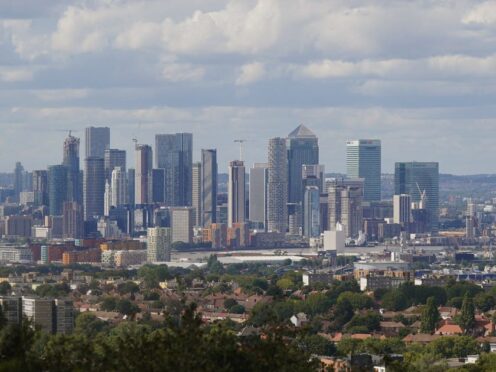
MPs, councillors and campaigners are calling for a nationwide ban on pesticide and herbicide use in England’s urban areas.
The coalition, led by Pesticide Action Network (Pan UK) and the RSPB, said a “top-down” approach from the Government would enable local authorities to cut back on using hazardous chemicals to maintain public land, roads and pavements.
Launching the campaign in Westminster this week, the group said it will push for a Private Members’ Bill to be tabled during the next parliament, presenting a draft with proposals for a three-year phase out.
Campaigners said it will boost biodiversity and health across England amid warnings that the UK is one of the most nature-depleted countries in the world.
Pesticide use in urban areas constitutes around 10% of the UK’s total usage – but it is the second most common route through which people are exposed to them after diet, according to a Pan UK analysis.
Exposure to several of those commonly used by local councils has been linked to health conditions such as cancer, but they also affect urban wildlife, such as birds, insects, bees and hedgehogs, and contaminate their food sources as well as water.
Nick Mole, from Pan UK, told the launch event: “There’s absolutely no reason or justification for using them in our towns and cities.
“By ending the use of pesticides in urban areas, we will reduce the exposure of potentially millions of UK citizens to harmful chemicals.”
More than 100 local authorities across Britain have already cut down or eliminated the use of pesticides and herbicides in areas under their control, following the example of France and Luxembourg.
They have turned to a mix of solutions, including green fertilisers, weed-ripping tools, hot water, vinegar, strimming and manual weeding.

Highlighting Lambeth Council’s work, Mr Mole said: “You can walk through Brixton and see red-listed endangered plant species growing on the streets.”
But several local councils have rolled back on these efforts in recent months, citing issues like costs, complaints around tidiness and concerns over pavement accessibility.
The campaigners said a nationwide ban will help to galvanise and support councils to implement alternatives.
“It would bring a lot more people together to work out solutions, cost share, share experiences and get things done,” Mr Mole said, adding that it could be “a real driver for change”.
But Liberal Democrat peer Wera Hobhouse warned that communicating the policy to constituents is essential to change public perceptions around pesticide use.
“Without that, without bringing people with us, it will be very difficult,” she said.
Green MP Caroline Lucas said: “It’s really important to go back to the basics and talk about why it is so important that we don’t have highly hazardous pesticides like glyphosate sprayed on streets, where children are playing, where people walk their dogs, where urban wildlife is being enjoyed.”
“They are basically an unnecessary addition to a cocktail of chemicals that we are already exposed to on a daily basis,” she added.
Speaking about Cambridge City Council’s experience of going pesticide-free, Councillor Sam Carling, said they had a “wildly successful” programme which saw residents groups take over to manage weeds on their streets without herbicides.
“It was possibly one of the best community initiatives that we’ve ever set up,” he said.
But Ms Carling added that private gardens make up the majority of green space in the area and communication efforts with residents to consider ending their own use of pesticides “isn’t really landing”.
“Bringing a national phase-out would really help to improve the media profile of this and help to reduce domestic use,” he said.
Lucy Metcalfe, a lawyer at ClientEarth – who helped to draft the Private Members’ Bill, argued that the policy meets legally binding Government commitments, such as the Global Biodiversity Framework, which includes the target of reducing the use of pesticides and highly hazardous chemicals by at least half by 2030.
“It’s something the Government has signed up to anyway,” she said.
An Environment Department spokesperson said: “We take all forms of pollution seriously and the Global Biodiversity Framework sets out our commitment to reducing the use of pesticides and highly hazardous chemicals by 2030.
“Alongside, in line with Defra’s 25-Year Environment Plan, the forthcoming National Action Plan on the Sustainable Use of Pesticides (NAP) will set out our ambition to support pesticide users.”

Enjoy the convenience of having The Sunday Post delivered as a digital ePaper straight to your smartphone, tablet or computer.
Subscribe for only £5.49 a month and enjoy all the benefits of the printed paper as a digital replica.
Subscribe